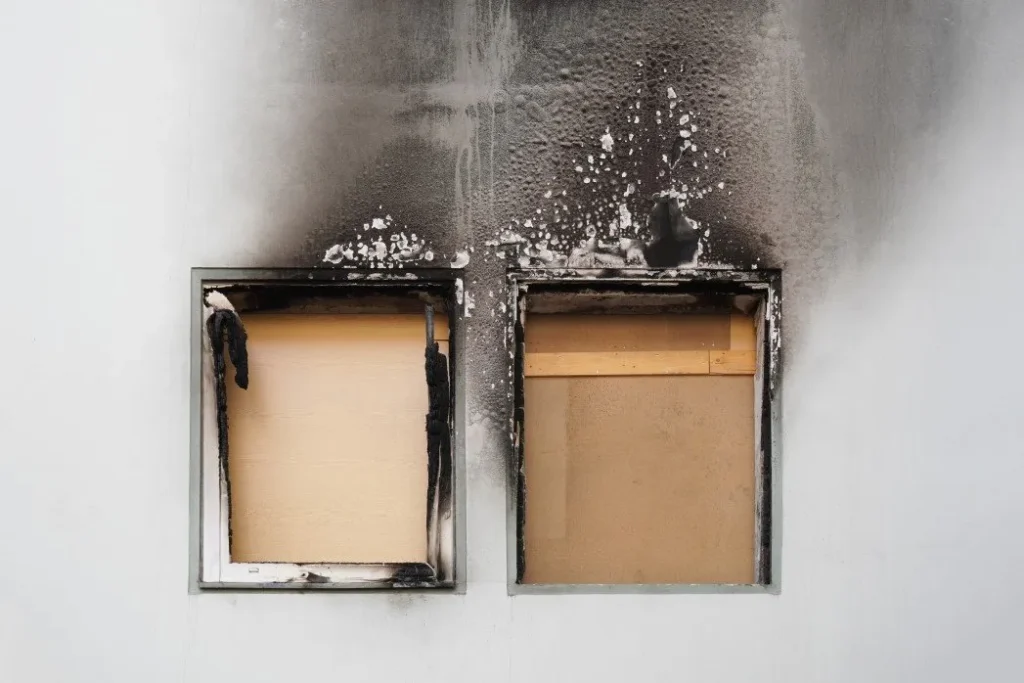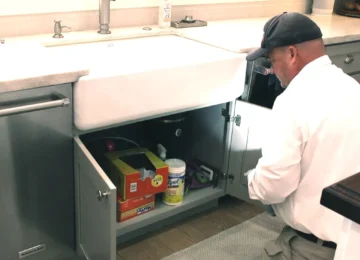Soot is a common result of fires but can cause serious problems for your home and health. Whether from a small kitchen fire or a large wildfire, soot particles travel through the air and settle on many surfaces. If not cleaned properly, soot can leave permanent stains, damage structures, and cause health issues. Fire Damage Repair Costs can also add up quickly if soot is not addressed early. Understanding how to clean soot after a fire is key to keeping your home safe and protecting your family’s health.
What Is Soot and Why Is It Dangerous?
Soot is made of tiny carbon particles formed when wood, paper, or fabric burns incompletely. These particles stay in the air and cling to surfaces after a fire. The dangers of soot include:
- Health Risks: Breathing soot can irritate your eyes, nose, and throat, worsen lung problems like asthma, and increase cancer risk.
- Property Damage: Soot’s acidic nature can corrode metals, etch glass, and cause permanent discolouration on walls, fabrics, and other materials.
- Lingering Smell: Soot has a strong smoky smell that can seep into clothing, carpets, air systems, ceilings, and walls.
How to Clean Soot Safely
When cleaning soot, protect yourself by:
- Wearing gloves, goggles, and an N95 mask or similar respirator.
- Ventilating the area by opening windows and doors.
- Isolating the affected space to avoid spreading soot.
- Testing cleaners on a small hidden spot before full use.
Cleaning Tools and Methods
Soot Sponge: A special dry sponge designed to lift loose soot without rubbing it deeper. Use gently on walls and ceilings. Do not rinse the sponge; cut off dirty parts as you clean.
Soot Cleaners and Degreasers: For stubborn soot or black streaks, use commercial soot cleaners or mild soap solutions. Read the directions carefully, use a soft cloth or sponge to apply the cleaner, rinse thoroughly, and dry the area to prevent streaks.
HEPA Vacuum: Use a vacuum with a HEPA filter to remove tiny soot particles from carpets and fabrics. Attach a soft brush to the vacuum and move slowly to avoid spreading the soot.
Cleaning Different Surfaces
- Walls and Ceilings: Start with a soft sponge to remove loose soot, then clean gently with a mild cleaner, working top to bottom. Dry and ventilate.
- Brick: Brush soot off with a stiff brush, vacuum debris, scrub gently with a masonry cleaner, and rinse with warm water.
- Concrete: Sweep and vacuum loose soot. Apply a concrete-safe cleaner, scrub, rinse, and dry. Use low-pressure power washing for exterior concrete.
- Wood: Dust or vacuum gently, clean with a wood-safe cleaner, rinse, dry well, and refinish if needed.
- Metal: Use a soot cleaner with a soft pad, rinse, and dry to avoid rust.
- Floors: Sweep or vacuum, mop with a mild cleaner, rinse, and dry.
- Carpets and Fabrics: Vacuum with HEPA filter, spot clean, and consider professional deep cleaning. Dry completely to prevent mould.
- Clothing: Shake out soot, pre-treat stains, wash on the hottest safe setting, and air dry. Use professional dry cleaning for delicate items.
Avoid over-wetting surfaces, harsh chemicals, aggressive scrubbing, and ignoring protective gear. These mistakes can worsen soot damage and harm your health.











